Each year, millions of intrepid hunters stalk the forests of North America. They wield curved blades for dismembering and mesh bags for carrying their defenseless prey. Some have been hunting since childhood; others have just gotten hooked.
The hunters’ targets don’t run, bleed, or even hide. Their prey is mushrooms. And, in some places and some cases, they target fire morels. Also known as burn morels, these fungi grow exclusively and prolifically in the ashen moonscapes of recently burned forests.
“Sometimes in burns, there’s just hundreds,” says Joe Spivack, a mushroom hunter with the Cascade Mycological Society in Eugene, Oregon. “You can see at least a hundred [fire] morels in an area the size of a car hood.”
Morels, generally referred to as “naturals” when they don’t pop up in burn scars, sport narrow, oblong caps decorated with honeycomb-like patterns. Found in diverse habitats, they’re more prized than the portabellas or criminis in grocery stores.
They’re toxic raw but have a subtle, umami flavor when cooked. Their texture can be described as egg-like, according to mycologist and mushroom farmer Graham Steinruck. Some chefs saute them with butter, and their hollow shape makes them prime candidates for stuffing and frying. You can preserve morels by drying them out, or you can pulse them in a food processor for a simple powder that can be added to soups and sauces. On the commercial market, morels can cost upwards of $20 per pound because they only fruit for a few weeks in the wild each spring.
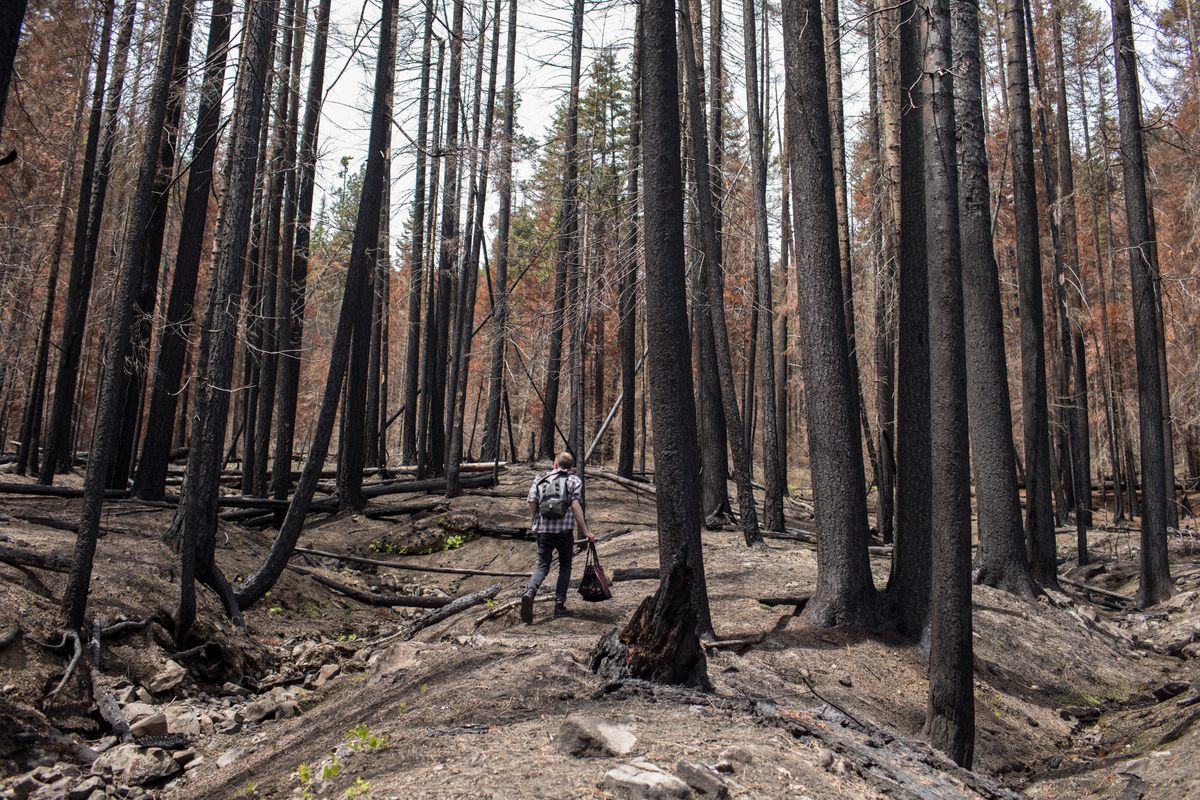
Fire morels, which Steinruck says have a mild smokiness to them, are more finicky than naturals. Depending on location, they sprout only in the spring following a prescribed burn or wildfire. Morels have a quirky and understudied lifecycle, which makes farming them on a large scale difficult.
For eager mycophiles, foraging is often the best option. Since last year saw about 6.2 million acres burned by wildfires in the western United States, foragers projected 2022 to be a prolific fire morel season.
In June, along with photographer Celeste Noche, I followed Steinruck for a foray into the Schneider Springs burn scar in Washington state. Last August, a lightning-started blaze incinerated more than 100,000 acres here, in the Okanogan-Wenatchee National Forest east of Mount Rainier.
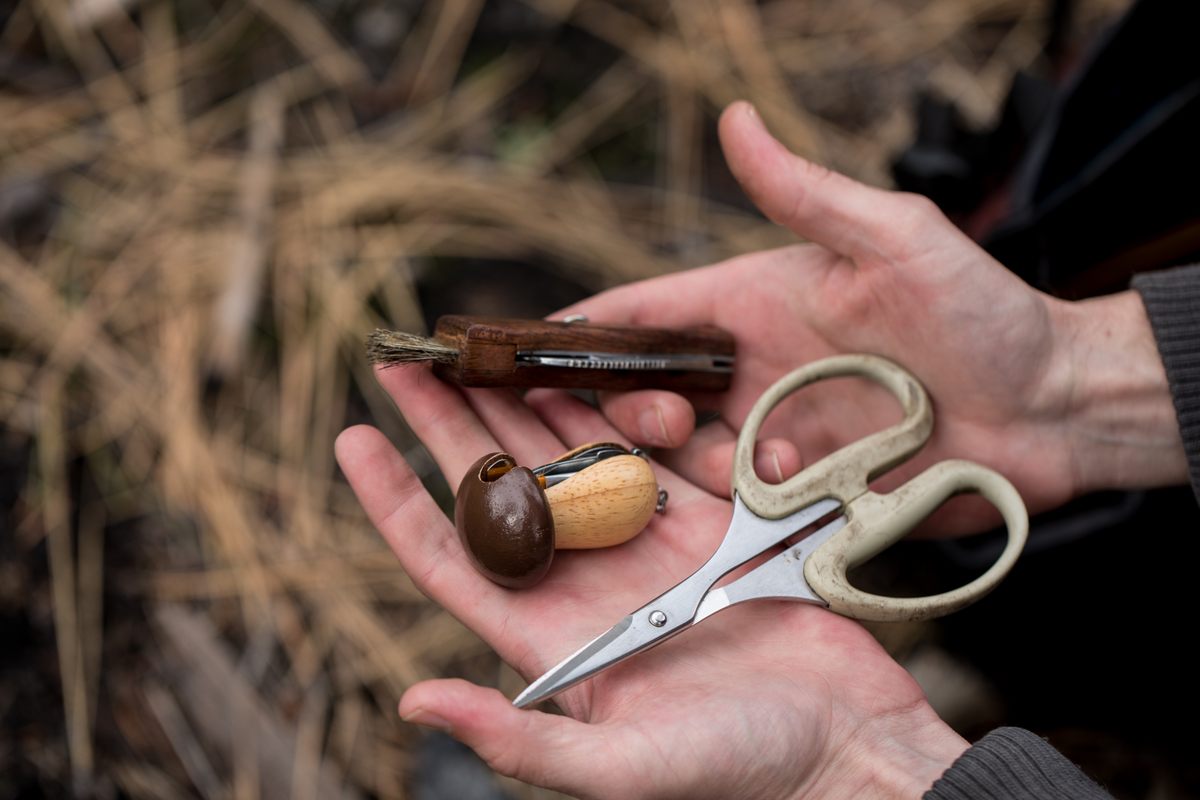
A little before 8 a.m., I meet Steinruck at the Naches Ranger Station, about a dozen miles southeast of the burn’s perimeter. After acquiring a free recreational mushroom hunting permit, which specifies that we can collect up to five gallons of morels per person per day, we caravan to Nile, a town on the edge of the burn area. We drive down the main Forest Service road, pull onto a gravel shoulder, grab our collection bags, and begin trekking up the gradual slope.
We pass red-topped conifers and heat-shattered rocks, but new growth pine trees have sprouted up in the last year. To a quick observer, morels are squishy-looking pinecones poking up beneath red needle duff, which is the decaying matter on the forest floor.
The trek is challenging, from the terrain and from the fire. Spivack warned me that “after a fire, it’s even harder to get a toehold after everything’s burned.” The slippery wet ash seems like an ice rink under the duff, without tree roots holding the soil in place. Burned-out stump holes and root channels can lead to a nasty fall if you’re not paying attention to where you step.
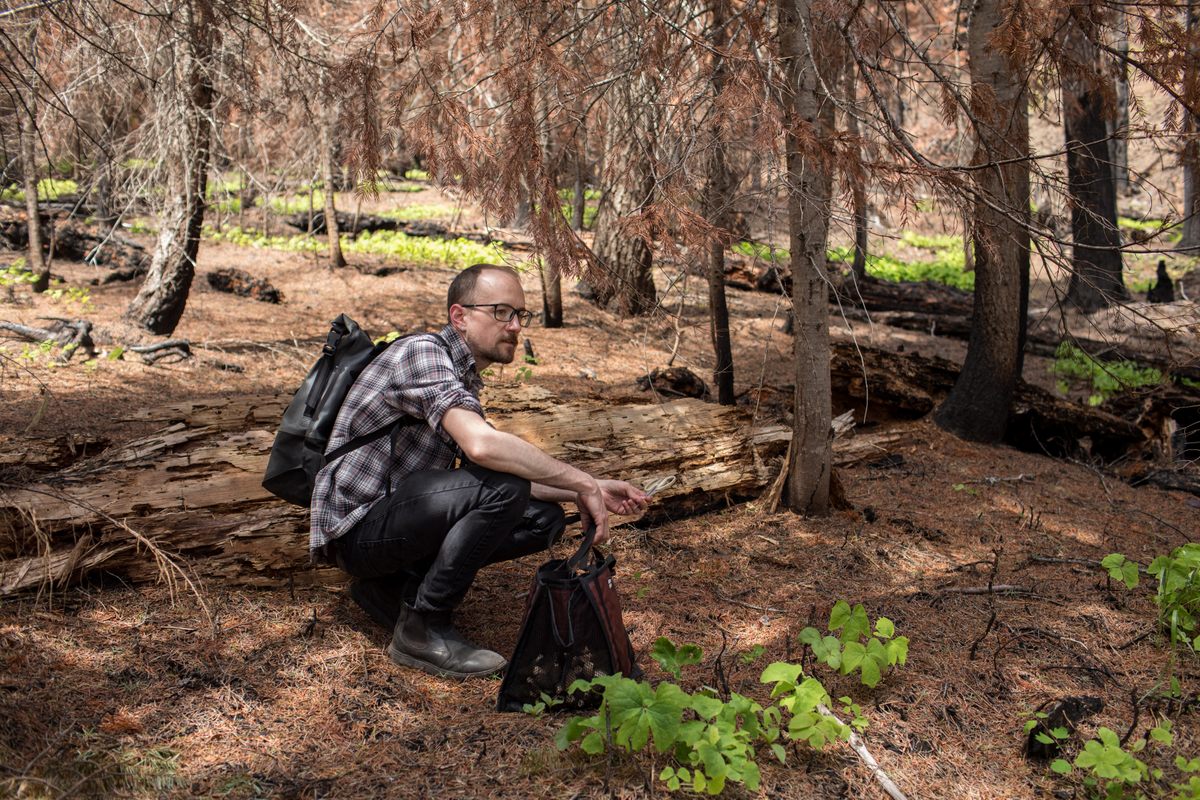
“If it’s really, really rainy and windy, get out of there,” Steinruck says. Gusts can easily topple dead trees.
We find small clumps of morels quickly on the slope. Fire morels tend to fruit in clusters—if you find one, there are likely several others within two dozen feet. But mystery footprints and cut mushroom stumps mean someone else has been here first. We climb up to the top of the slope for perspective, then head back to our vehicles.
Morels are widespread across the United States, says Kristen Blizzard, one half of the duo that runs the Modern Forager mushroom blog. They’re difficult to research because of their wild nature.
“There’s such big questions on how [fungal roots] can persist for so long before a fire,” says Ron Hamill, a mycologist who has been researching burn-related fungi for the last 15 years and is currently working on a book.
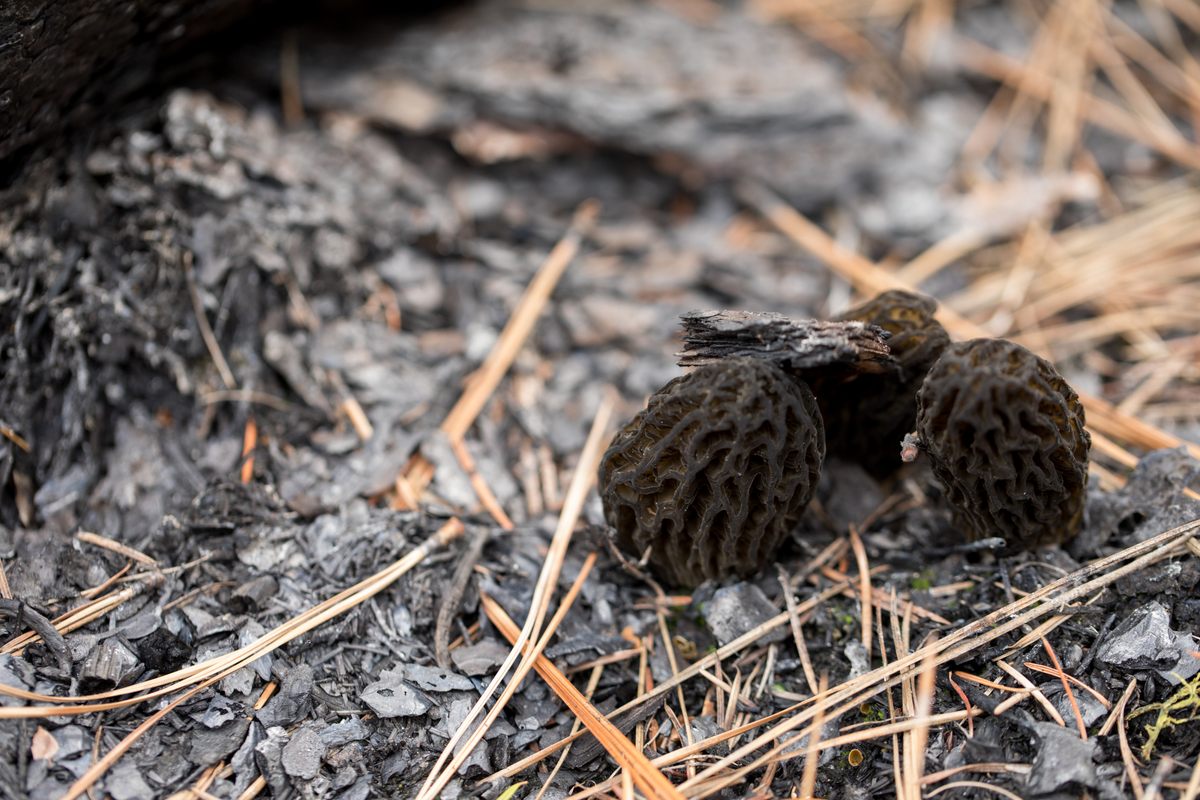
The mushrooms we can see are only the fruits of mycelium, the fungal network found in soil. Trent Blizzard, also of the Modern Forager blog, says the mycelium live in symbiotic relationships with trees, specifically living roots. By contrast, commercially farmed mushrooms such as shitake and button mushrooms feed on dead organic matter.
“They’ve been waiting for 50 years to do their thing,” says Blizzard, referring to how mycelium can spend decades among trees before fires trigger it to fruit. “And then the burn comes through and they fruit and you don’t see them again. Nobody’s figured out exactly what it is.”
One reason that morels remain so mysterious is that they are nearly impossible to distinguish from each other. “We were really limited [in research] before by our ability to just identify fungi,” says Sydney Glassman, a professor at the University of California, Riverside. But technologies such as DNA testing and stable isotope testing are changing that. Her lab uses molecular analysis and bioinformatics to identify pyrophilous, or “fire-loving,” fungi.
“We’re finally being able to answer questions that were really difficult to answer,” says Hamill, who points to new technologies as enabling the identification and study of fungi and bringing about a “golden age of mycology.”
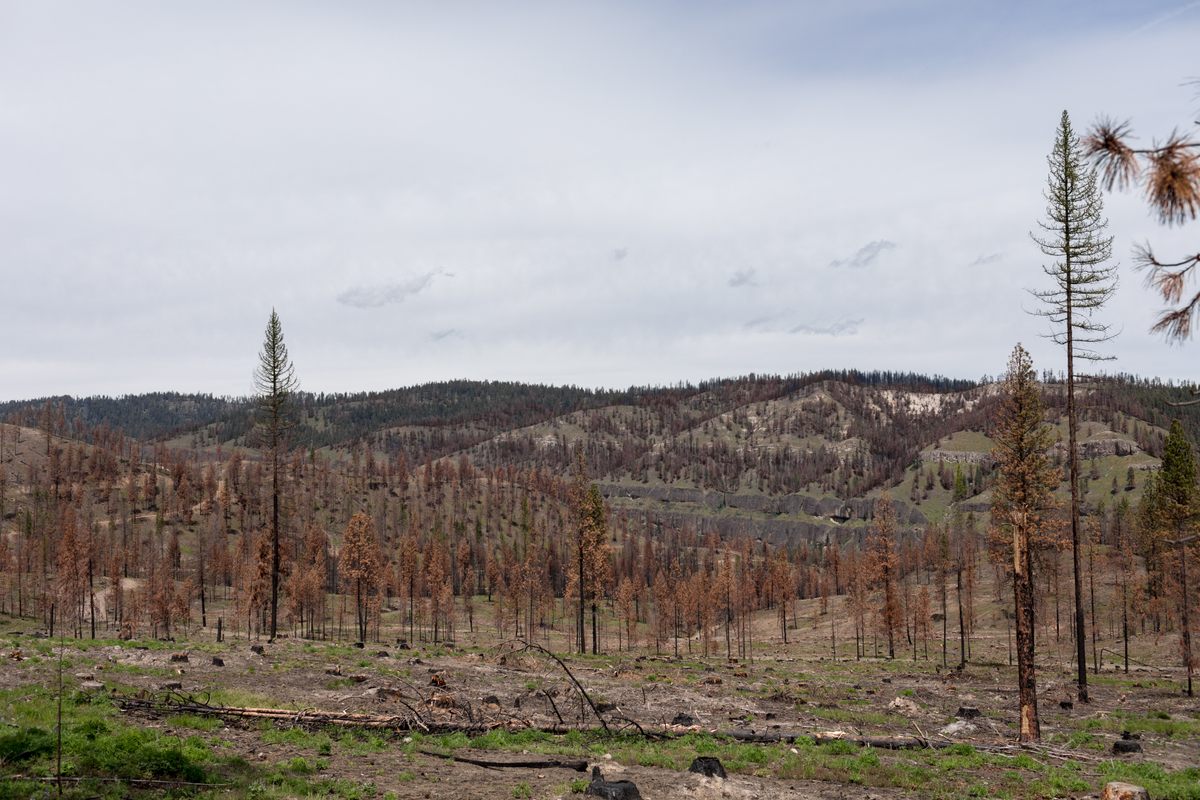
Steinruck gets some intel from his mushroom network, so we drive for about half an hour to another spot in the burn. Other mushroom hunters are toting bags full of morels, so we grab our bags and head for the hills.
This section is more evenly burned with more scorched trees, indicating the fire burned hotter here. Grand fir trees are plentiful, and morels are commonly found among firs in this region. The slope is steeper, meaning flames could have easily run uphill hot and fast.
At first, the morels seem even less frequent. We find smaller mushrooms with dried-out caps and swollen stems, meaning they’re not as fresh as new sprouts. More than one hunter has told me that just when you seem to give up on the hunt, you find the jackpot. Or, as it’s called in the foraging world, the honey pot.
“It’s exactly like gambling. You need your next hit of dopamine,” Steinruck says.
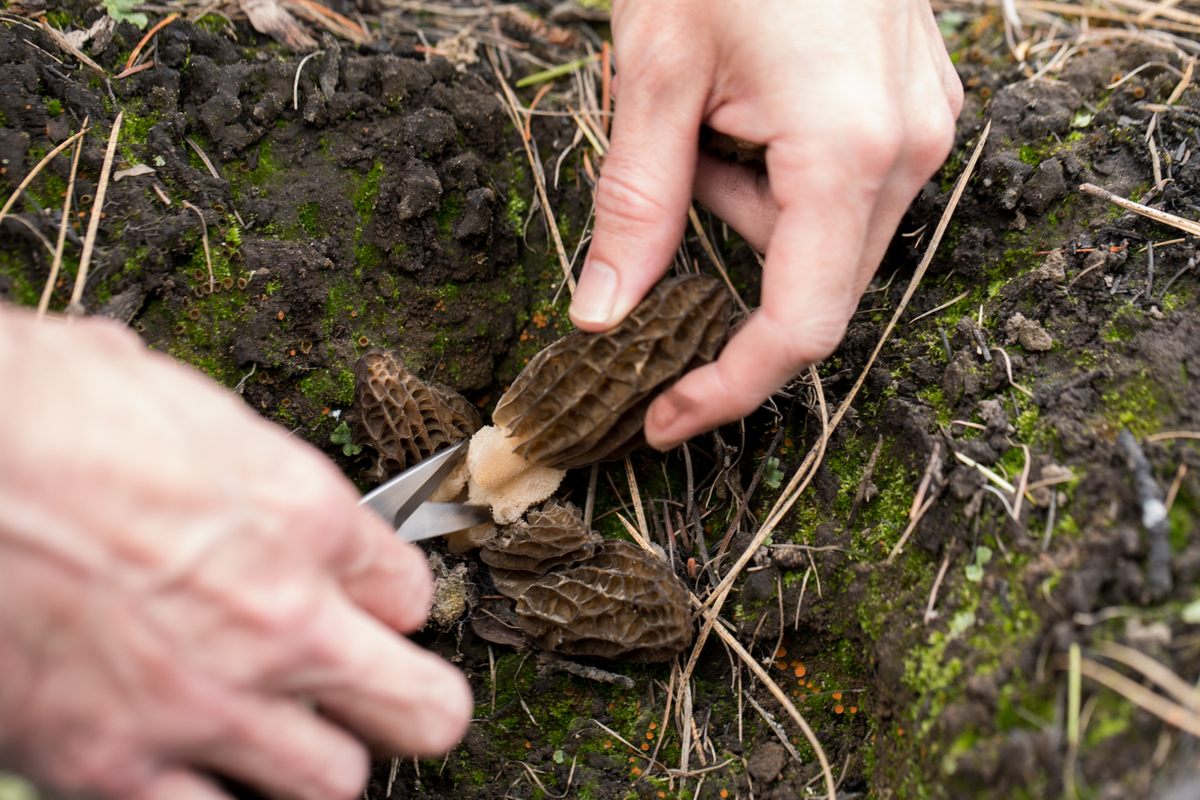
It’s easy to get caught up in mushroom hunting. You can be looking down at the ground for hours, and when you finally look up, you realize you’ve strayed far from where you began. And yet, hunting for morels almost seems like instinct. Once you start spotting them, you keep finding them.
“Your brain knows how to do it,” Steinruck says. “Your eye almost gravitates toward them.”
It’s getting later in the afternoon and I’m losing hope of finding the motherlode as we continue wandering up the hill. And then we start seeing more fire morels. They cluster together on a slope leading to a small stream, in the creases of ground between tree roots, and in burned-out holes on the forest floor. Some are thumb-size and some are bigger than a fist. We’ve found the honey pot.
As I crouch to slice a mushroom stem, I spot half a dozen within several feet. The instant I close the blade on my mushroom knife, I see a handful more several paces away. We fill our bags with morels of all sizes. Our bodies are tired from crouching and hiking, and I almost wish we could stop finding the mushrooms. Almost.
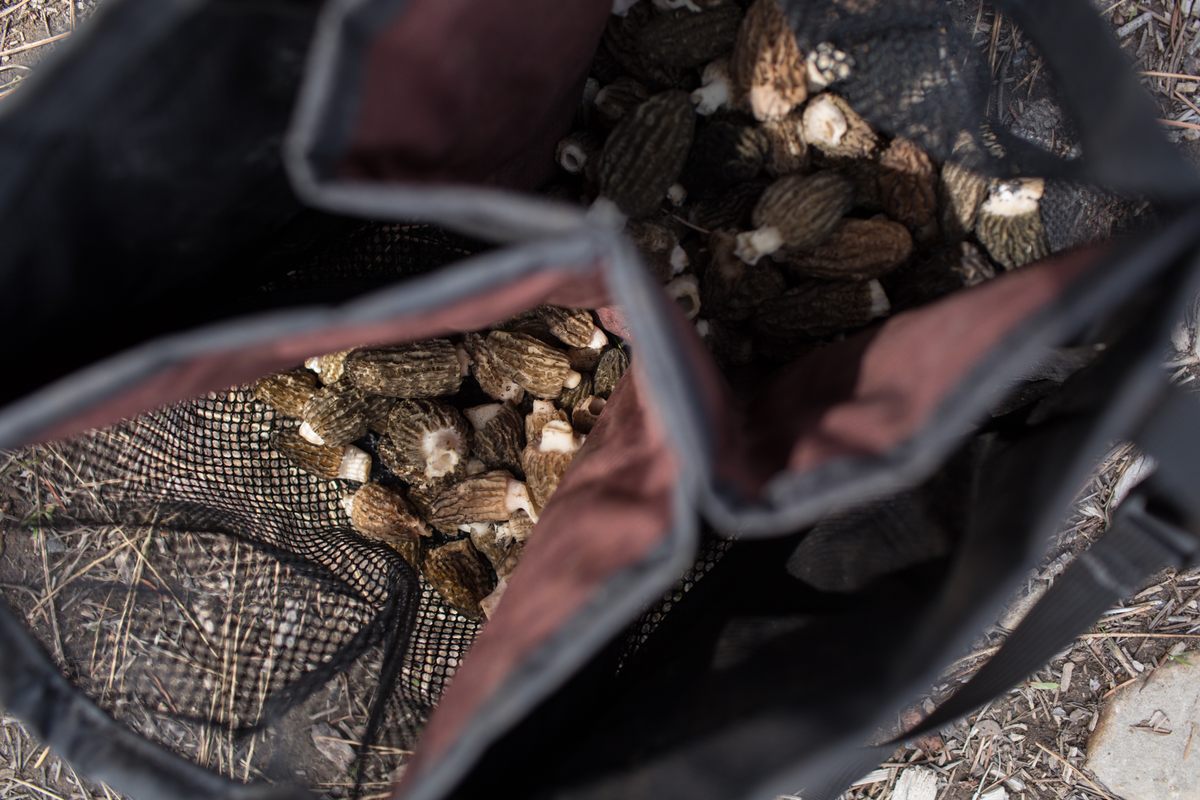
Eventually, with two nearly full bags and long drives ahead of us, we call it a day. The climb back down is easier, but we have to stop every few seconds to gather another cluster of morels. We can’t not pick them up.
“That was one of the best [hunting spots] I’ve ever seen,” Steinruck says when we reach the cars. We drive back to civilization, thinking about the food we’ve earned and all the different ways to prepare these tasty, mysterious morsels.
Gastro Obscura covers the world’s most wondrous food and drink.
Sign up for our email, delivered twice a week.
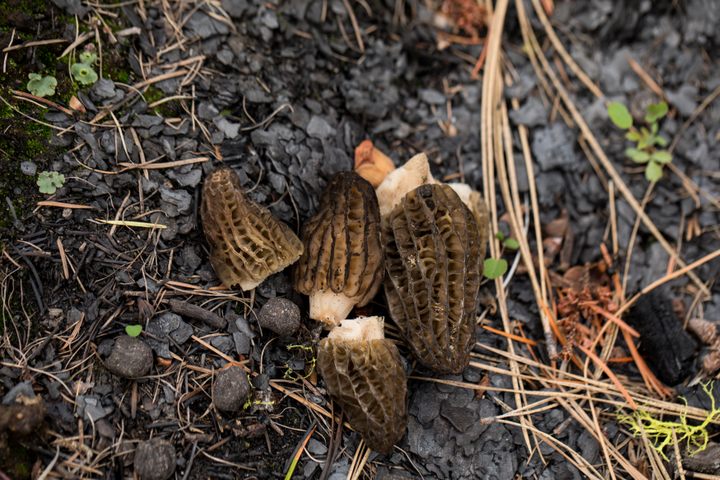



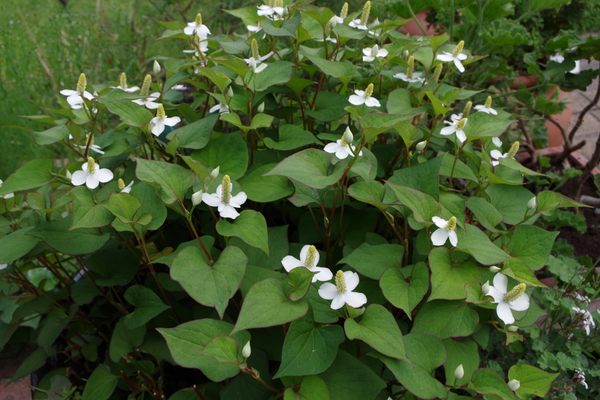

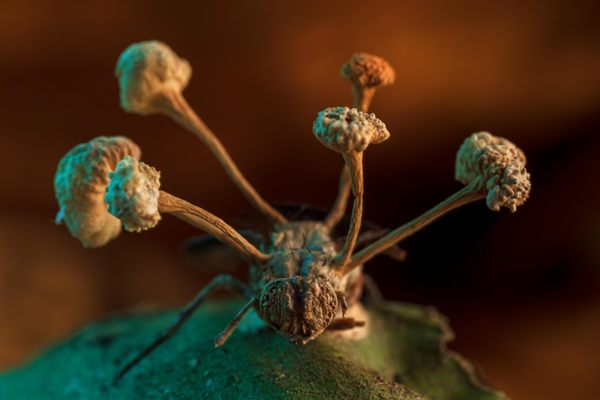
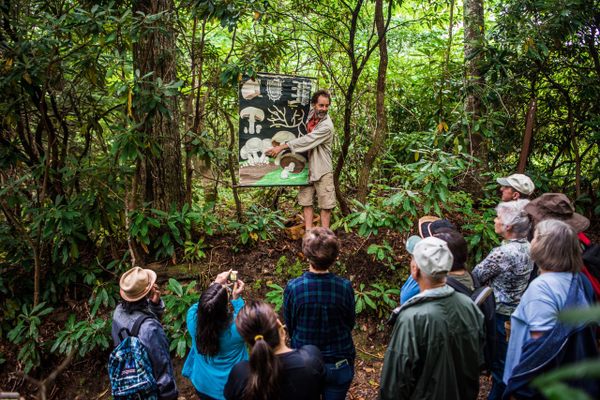









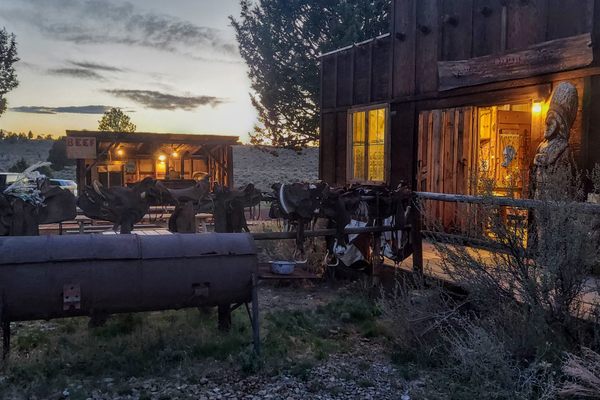
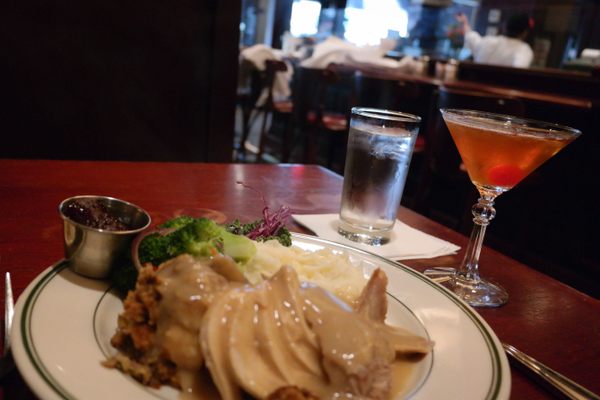

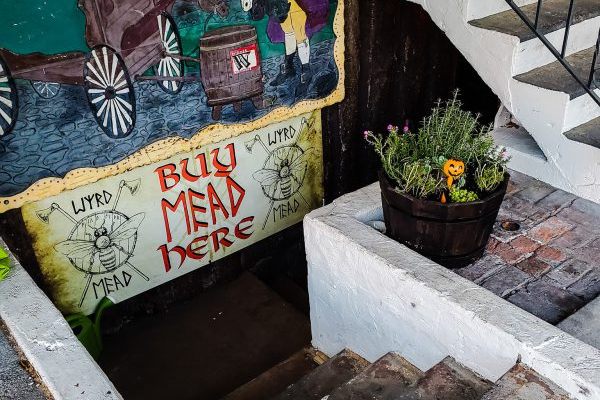


Follow us on Twitter to get the latest on the world's hidden wonders.
Like us on Facebook to get the latest on the world's hidden wonders.
Follow us on Twitter Like us on Facebook